March in the Grand Canyon
Learn all about what it means to visit Grand Canyon National Park in March
Updated: 09/13/22
March, the Spring Break month, is a popular time to visit the Grand Canyon. Early March tends to be quiet as activity at the Canyon picks up throughout the month, peaking toward the end of the month as Spring Break visitors head to the Park. The shoulder season months (March, April, May, September, October, and November) are the best months for backpacking trips, and March is excellent for hiking in general. Rafting tours begin in March but are the chilliest this month. March can still have winter storms, but the temperatures can just as easily be sunny and cool at the rim, with warmer, lovely weather inside the Canyon.
Benefits of Visiting in March
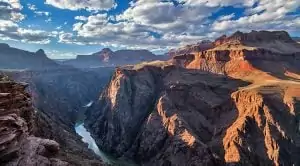 The biggest benefit of visiting the Grand Canyon in March is the overall fantastic temperature inside the Canyon. As the beginning of spring in the park, the temperatures inside the canyon are more kin to a mild spring with days in the 70s and nights in the 50s that make camping and hiking spectacular. As the beginning of the shoulder seasons around summer, March is fantastic for many activities and the weather can’t be beat. While a late snowstorm on the rim is possible, March is the tapering off of winter. It will still be chilly at such high elevations, but you won’t have to pack heavy snow gear. Crampons or micro spikes used for additional traction technically become optional late in the month on some of the Arizona hiking trails that will not have ice but are still recommended for most of March on most trails. Another benefit of March is that for about the first half of the month, the crowds are still moderate and the park is relatively quiet, especially with the chance of a late snowstorm on the rims. This means that during the first few weeks of March, accommodations will still be less expensive and more available than they are later in the season.
The biggest benefit of visiting the Grand Canyon in March is the overall fantastic temperature inside the Canyon. As the beginning of spring in the park, the temperatures inside the canyon are more kin to a mild spring with days in the 70s and nights in the 50s that make camping and hiking spectacular. As the beginning of the shoulder seasons around summer, March is fantastic for many activities and the weather can’t be beat. While a late snowstorm on the rim is possible, March is the tapering off of winter. It will still be chilly at such high elevations, but you won’t have to pack heavy snow gear. Crampons or micro spikes used for additional traction technically become optional late in the month on some of the Arizona hiking trails that will not have ice but are still recommended for most of March on most trails. Another benefit of March is that for about the first half of the month, the crowds are still moderate and the park is relatively quiet, especially with the chance of a late snowstorm on the rims. This means that during the first few weeks of March, accommodations will still be less expensive and more available than they are later in the season.
March marks the beginning of the rafting season on the Colorado River, so if that is on your bucket list, this is the earliest in the year that you can go to Grand Canyon and participate in this activity. It is the coldest of all the months where rafting is offered and the water is still frigid, but those brave enough can participate and may even get some discounted rates for not going at peak season.
Wildlife starts to emerge in March, especially lower in the canyon as the temperature warms. Snakes, lizards, and other reptiles begin to come out of hibernation later in the month depending on the weather so you might get a chance to see more of these creatures. The larger wildlife also becomes more active with a better chance of seeing coyotes, California condors, elk, mule deer, and bighorn sheep.
As spring approaches and summer and just beyond it, the days are getting longer and warmer further into the evenings. Even though it is still chilly at night, especially on the rim, you’ll have more hours of sunlight than earlier in the winter and have a better chance of being able to do a longer hike that might take you 6 to 8 hours. March can’t be beaten for backpacking and hiking. Even the climb up out of the canyon will be more bearable as you leave the warmer temperatures as your temperature increases because of the exercise and are refreshed by the cooler air on the rim. Backpacking down into the canyon and even up to the north rim, which is still closed to cars (but will have less snow and be less dangerous than earlier in the season), is simply phenomenal. You can experience the solitude of the Grand Canyon early in the month on a backpacking trip or hike as the weather is perfect and the conditions are just right.
Drawbacks of Visiting in March
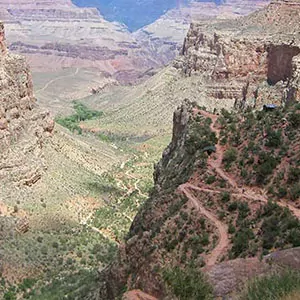 The biggest drawbacks of visiting in March are the lingering possibility of winter storms that could close roads and make hiking more difficult. While it is very possible that your visit in March will be much more spring-like than winter-like, you should bring warm layers and prepare for the possibility of snow. This is unfortunate as many people who do not have winter gear want to make a trip to the Grand Canyon and while March is usually safe, it’s not safe enough to go without some preparedness for winter. If you’re planning to spend all of your time on the rims and only go on short day hikes into the canyon, you are more likely to run into winter weather. If a snowstorm does hit, it can unexpectedly close roads and all trails, effectively bringing the activities in the Canyon and on the rims to a screeching halt. In addition, if you hiked down into the canyon without winter gear and our unlucky enough to have traveled when a snowstorm hit, you will be in a sticky situation trying to climb out of the canyon covered in snow without winter gear. It is essential to check the forecast before you set out even on a day hike, as the weather in March can be volatile and unpredictable.
The biggest drawbacks of visiting in March are the lingering possibility of winter storms that could close roads and make hiking more difficult. While it is very possible that your visit in March will be much more spring-like than winter-like, you should bring warm layers and prepare for the possibility of snow. This is unfortunate as many people who do not have winter gear want to make a trip to the Grand Canyon and while March is usually safe, it’s not safe enough to go without some preparedness for winter. If you’re planning to spend all of your time on the rims and only go on short day hikes into the canyon, you are more likely to run into winter weather. If a snowstorm does hit, it can unexpectedly close roads and all trails, effectively bringing the activities in the Canyon and on the rims to a screeching halt. In addition, if you hiked down into the canyon without winter gear and our unlucky enough to have traveled when a snowstorm hit, you will be in a sticky situation trying to climb out of the canyon covered in snow without winter gear. It is essential to check the forecast before you set out even on a day hike, as the weather in March can be volatile and unpredictable.
Another drawback to March is that the second half of the month becomes busier with spring break travelers. Because the North Rim is not open, all the visitors are concentrated on the South Rim, making for busier accommodations, busier parking lots, and longer lines for services. Although the crowds are nothing like they are in the summer, it’s not quite the quiet winter experience you might’ve been hoping for. This leaves visitors in a conundrum for visiting in March. If you go in the first half of the month, a significant winter storm is more of a possibility, but you’ll be avoiding the crowds. If you go in the second half, the odds of a winter storm are less, but you’ll visit at a busier time.
As mentioned above, the North Rim is closed in March, so the South Rim is the only part of the Park you can visit. In fact, the North Rim is closed from early November to mid-May every year. While the South Rim is by far the most famous and definitely worth a visit on its own, many visitors feel as though they miss out if they do not get to see the North Rim which boasts more solitude and a different perspective on the park. While you can hike to the North Rim in the winter, this might be more than some visitors are willing to invest in gear and time.
Things to Do in March
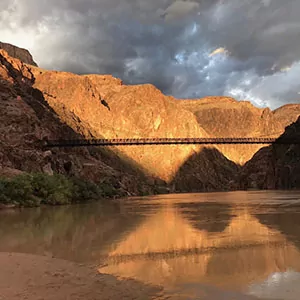 March is one of the best months of the year for hiking and backpacking the Grand Canyon, so that’s the number one recommended thing to do if you visit this month. Backcountry camping permits are required for backpacking, and you’ll want hiking crampons for hiking or backpacking (permits and crampons are included on guided tours.) Experienced hikers can take a trek to the still closed-to-vehicles North Rim of the Canyon and experience some solitude compared to the South Rim. Other hiking trails around the rim and into the canyon are also great this time of year as much of the snow and ice has melted and you can usually access the trails safely. There are many guided tours that are also available in March: helicopter tours, fixed-wing tours, sightseeing tours, and bicycle tours. Rafting the Colorado River is one of the most popular activities in the park and March is the first month of the year that you can do it. Be warned, however, that March is also the chilliest month that rafting is open and you might end up being chilled instead of refreshed by the snowmelt waters of the river.
March is one of the best months of the year for hiking and backpacking the Grand Canyon, so that’s the number one recommended thing to do if you visit this month. Backcountry camping permits are required for backpacking, and you’ll want hiking crampons for hiking or backpacking (permits and crampons are included on guided tours.) Experienced hikers can take a trek to the still closed-to-vehicles North Rim of the Canyon and experience some solitude compared to the South Rim. Other hiking trails around the rim and into the canyon are also great this time of year as much of the snow and ice has melted and you can usually access the trails safely. There are many guided tours that are also available in March: helicopter tours, fixed-wing tours, sightseeing tours, and bicycle tours. Rafting the Colorado River is one of the most popular activities in the park and March is the first month of the year that you can do it. Be warned, however, that March is also the chilliest month that rafting is open and you might end up being chilled instead of refreshed by the snowmelt waters of the river.
Hiking or doing the mule ride to Phantom Ranch is excellent in March if you can get reservations, which are very competitive this time of year. Of course, there are many options for sightseeing in the park. Driving along the South Rim and pulling out at overlooks is a great option if you’re looking for a more laid-back day to enjoy the park from the comfort of your heated car. Most people think the most stunning views are between the visitor center and Hermit’s Rest in the west, but you can find remarkable views anywhere in the canyon. Checking out things like the Yavapai Geology Museum and the Kolb Studio is very much worth doing if the weather prevents you from being outside. The 22-minute visitor center film is a great way to learn more about the park from the warmth of a heated building.
The Grand Canyon also boasts an iconic, old western-style railroad, called the Grand Canyon Railway that brings visitors from the nearby city of Williams on a relaxing trip to the park, often accompanied by western outlaws and bandits. On the West Rim, the Grand Canyon skywalk (a bridge made entirely of glass suspended nearly 4000 feet above the canyon floor) or a visit to Eagle Point Native American village are both great options. Guests can also enjoy an all-American dinner at the famous and historic El Tovar, which is a must-do activity in Grand Canyon, but reservations in March will be more competitive than earlier in the season.
Wildlife and landscape photography are also very popular options in Grand Canyon in March as wildlife will be making its way out of hibernation and into a more active state as the weather warms. Late snow will also bring fantastic opportunities to get those winter pictures when the snow is just hanging on to each ledge in the canyon. Night sky photography is also a great option if you’re willing to brave the cold nights. The canyon as the foreground of the milky way makes for some astonishing photos.
THings to see in March
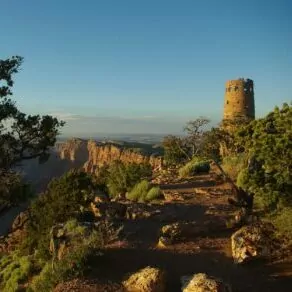 Grand Canyon is known for its sightseeing and March is an excellent option to see some of the sights in the park. While the largest attraction of all, the canyon itself, is the most notable thing to see, various viewpoints and other sights are worth mentioning. Below, we’ve created a list of some of the must-see sights in March, but make sure to do your own research and see what specifically piques your interest in the park as the list is by no means exhaustive.
Grand Canyon is known for its sightseeing and March is an excellent option to see some of the sights in the park. While the largest attraction of all, the canyon itself, is the most notable thing to see, various viewpoints and other sights are worth mentioning. Below, we’ve created a list of some of the must-see sights in March, but make sure to do your own research and see what specifically piques your interest in the park as the list is by no means exhaustive.
Phantom Ranch: The only of the national park lodges lying at the bottom of the canyon itself, Phantom Ranch is worth seeing even if you can’t get reservations. Designed by the famed architect who designed many of the structures in the park, Mary Colter, the ranch boasts primitive cabins nestled among the trees and a snack bar where you can order food and drinks. The NPS doesn’t recommend hiking rim to rim in a single day, so you might want to try to get reservations at the ranch or backpack for a single night before climbing back up to the South Rim.
Plateau Point: Lying on the Bright Angel Trail, this overlook is one of the best views of the Colorado River and the canyon in the park. While the trail is very popular and in the summer will be swarmed with visitors, in March you’ll find it more peaceful and with fewer crowds. Make sure you have crampons or microspikes just in case on this trail as there still may be ice on the first 3 miles, even in March.
Desert View Watchtower: Another feat of architect Mary Colter, this watchtower in the first village you encounter after coming into the park from the east side, seems to rise out of the very canyon walls. With a recreation of a Native American Kiva inside the first level and stunning views of the canyon outside the windows on the upper levels, you won’t want to miss this fantastic piece of art and history.
Hermit’s Rest: This cabin, once again a work of Mary Colter, was designed to look like an old miners’ cabin and was put at the end of Hermit’s Rest Scenic Drive as the last piece of civilization before guests descend into the canyon by the trail leading from behind it. Now boasting a snack stand and gift shop as well as incredible views of the canyon, this historic spot is a must-see in March when the crowds will be lessened and the views just as good.
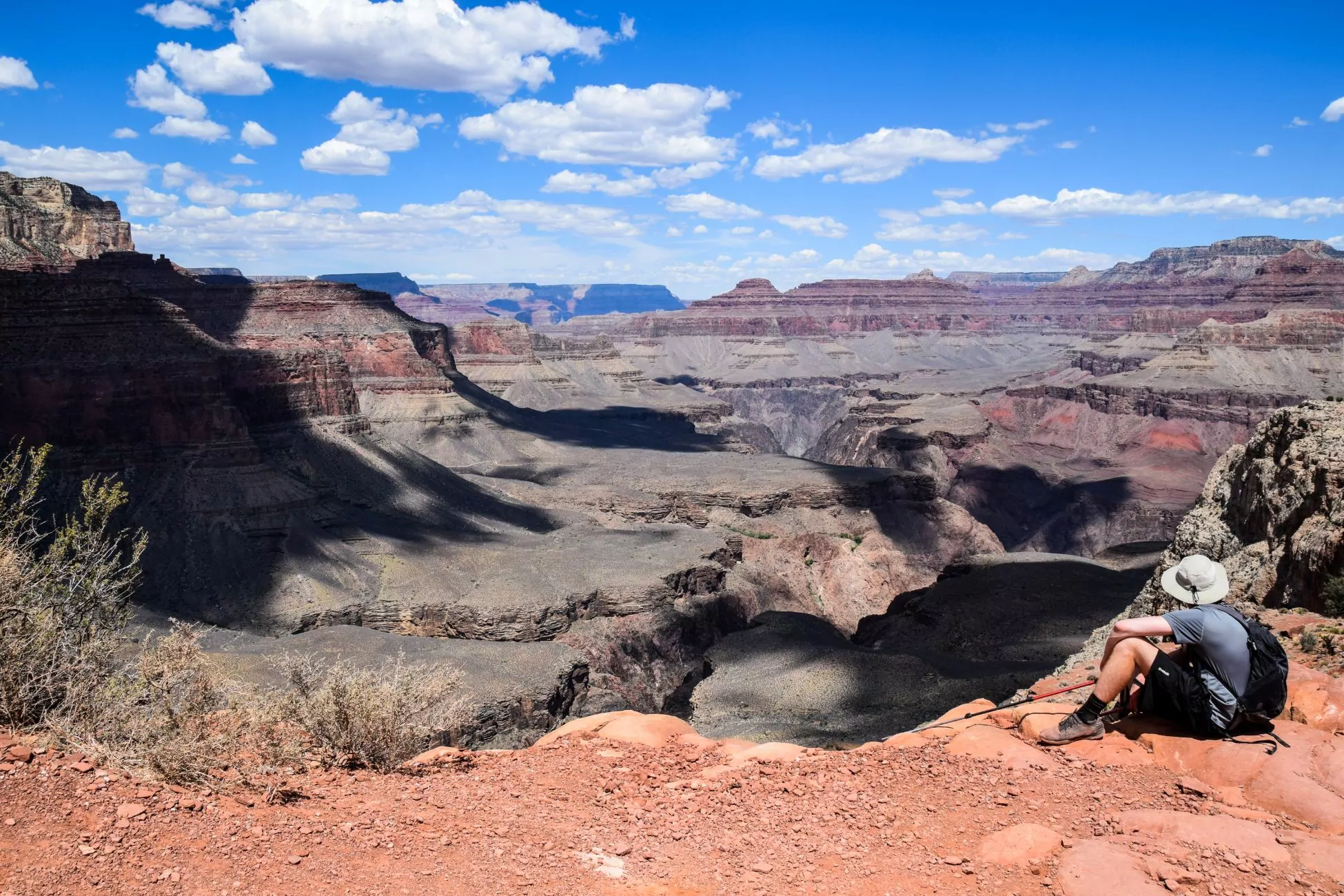
Hiking in March
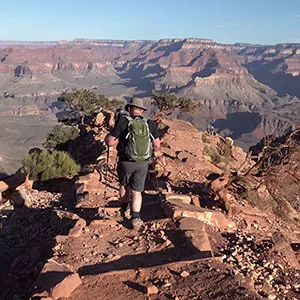 As we’ve emphasized above, March is an excellent month for hiking the Canyon, and that includes day hikes, backpacking trips, and hikes to Phantom Ranch. Backpacking permits are easier to get in the first half of March than in the second half (permits aren’t required for day hiking). We recommend having hiking crampons with you in March, which are included on guided tours. Much like chains for your car tires when it’s icy, microspikes are made of rubber, small chains, and little spikes that give you extra traction on the ice and snow. Crampons are a more heavy-duty version of the same idea. They will strap over any standard hiking boots and the spikes dig into the ice, making you less likely to slip. Although March is moving toward spring, freezing temperatures overnight can still cause ice and you should bring these for your own safety. It only takes a small section of ice to make you thankful that you had the extra gear. As most of the trails in Grand Canyon are steep, sliding down or slipping while trying to climb up the trails without additional traction on your feet is very likely. As long as you have crampons, there are no trails we recommend avoiding in March, although the North Rim is closed so the South Rim Trails (Hermit, Bright Angel, South Kaibab, Grandview, New Hance, Tanner) are the best options.
As we’ve emphasized above, March is an excellent month for hiking the Canyon, and that includes day hikes, backpacking trips, and hikes to Phantom Ranch. Backpacking permits are easier to get in the first half of March than in the second half (permits aren’t required for day hiking). We recommend having hiking crampons with you in March, which are included on guided tours. Much like chains for your car tires when it’s icy, microspikes are made of rubber, small chains, and little spikes that give you extra traction on the ice and snow. Crampons are a more heavy-duty version of the same idea. They will strap over any standard hiking boots and the spikes dig into the ice, making you less likely to slip. Although March is moving toward spring, freezing temperatures overnight can still cause ice and you should bring these for your own safety. It only takes a small section of ice to make you thankful that you had the extra gear. As most of the trails in Grand Canyon are steep, sliding down or slipping while trying to climb up the trails without additional traction on your feet is very likely. As long as you have crampons, there are no trails we recommend avoiding in March, although the North Rim is closed so the South Rim Trails (Hermit, Bright Angel, South Kaibab, Grandview, New Hance, Tanner) are the best options.
Of course, Bright Angel Trail and South Kaibab Trial are the most popular and great options. Bright Angel Trail will be shadier and have a greater likelihood of ice, but some say it has better views. There are also many less popular but no less stunning options that will give you a bit more of the solitude you might be looking for. Remember that March in the Grand Canyon is still technically winter, and you will need to be prepared for winter weather and adverse conditions. Mornings and evenings will be chilly, so make sure you can finish your hike before the early onset of the winter nights when the temperature will drop sharply.
Hypothermia is a real risk in the Grand Canyon, especially when the temperatures are not below freezing and visitors do not feel like they have to take extra precautions. This is when your body temperature becomes dangerously cold and you are no longer able to keep yourself warm. Hypothermia can occur even when the temperature is over 40°F if you get chilled, such as from wind or water. Because hypothermia causes confusion and bad decision-making, it is difficult to know when you have it yourself, so you should always hike with others and make sure everyone knows the symptoms of hypothermia to identify in your travel companions. Look for the symptoms of the “umbles”– grumbling, stumbling, mumbling, and fumbling. The best way to prevent this condition is to put on your warm layers before you start shivering and your rain/snow gear before you get wet. This will keep you from being chilled which is often the first step in having hypothermia.
Make sure to drink plenty of water on your hike even though it is cold and maybe carry it in an insulated container to keep it from freezing overnight. Make sure to eat while you hike as well, however, as water poisoning– an excess of water in the bloodstream that causes an imbalance of sodium which can be life-threatening– has occurred in the park from visitors drinking too much water especially when it’s hot. Talk to a ranger if you’re unsure about which trails are safe or best for your fitness level. Make sure to hike in groups and stay safe while on the trail.
backpacking in march
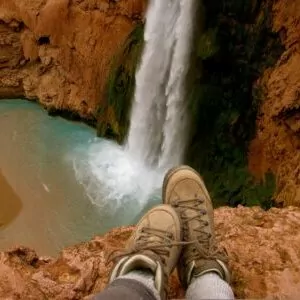 Backpacking in March in Grand Canyon is world-class as the temperatures are perfect along the floor of the canyon and the crowds have not yet arrived for summer. Backpacking is also a great way to escape some of the crowds that have arrived in March for spring break. If you’ve never backpacked in the Grand Canyon before or if you’ve never camped in winter, consider going with a guiding company. The expert guides will make sure that you have an enjoyable trip and that you’re not missing any crucial safety information. While March is less dangerous and requires less gear than backpacking in January and February, it still has the possibility for winter weather, and backpackers will need to be prepared for this. If you were looking to do just a short trip, consider a two-day, one-night hike down into the canyon. This way you’ll be able to experience a rim-to-rim hike with a restful evening in between and cool temperatures on the floor of the canyon. You could also opt to stay at Phantom Ranch if you can get reservations. Either the Bright Angel or the South Kaibab Trails are great options for doing this, and you can mix and match between the two to make your backpacking trip a loop instead of an out-and-back trail. There are many other options within the canyon, as well as a trail that goes further west called Hermit Loop that has stunning sights, great history, and spectacular fossils. Many backpacking trips that wind through the canyon can get complicated, but you can check out what backpacking trips are offered by guiding companies in the canyon and either book a trip or take some ideas from the itineraries.
Backpacking in March in Grand Canyon is world-class as the temperatures are perfect along the floor of the canyon and the crowds have not yet arrived for summer. Backpacking is also a great way to escape some of the crowds that have arrived in March for spring break. If you’ve never backpacked in the Grand Canyon before or if you’ve never camped in winter, consider going with a guiding company. The expert guides will make sure that you have an enjoyable trip and that you’re not missing any crucial safety information. While March is less dangerous and requires less gear than backpacking in January and February, it still has the possibility for winter weather, and backpackers will need to be prepared for this. If you were looking to do just a short trip, consider a two-day, one-night hike down into the canyon. This way you’ll be able to experience a rim-to-rim hike with a restful evening in between and cool temperatures on the floor of the canyon. You could also opt to stay at Phantom Ranch if you can get reservations. Either the Bright Angel or the South Kaibab Trails are great options for doing this, and you can mix and match between the two to make your backpacking trip a loop instead of an out-and-back trail. There are many other options within the canyon, as well as a trail that goes further west called Hermit Loop that has stunning sights, great history, and spectacular fossils. Many backpacking trips that wind through the canyon can get complicated, but you can check out what backpacking trips are offered by guiding companies in the canyon and either book a trip or take some ideas from the itineraries.
On many backpackers’ bucket lists is a rim-to-rim-to-rim backpacking trip, which means hiking from the south rim to the north rim and back to the south rim within a couple of days. March is a great time to make this hike as the weather is cool and you are less likely to run into crowds or snow. While you still need to be equipped with crampons or microspikes on this trip, you are less likely to run into winter storms or snow drifts. Still, however, this trip is not for the inexperienced or the faint of heart. In addition, all the dangers of day hiking are only amplified in the backcountry, so make sure to read the section above if you’re interested in this activity. The trails leading out of the canyon can be brutal and very steep, so you’ll need to make sure you’re in shape and able to handle the trails as well as the elevation of the canyon. The North Rim is still closed this time of year, so you’ll have much of it to yourself and be able to experience solitude and remoteness while the crowds gather across the canyon. Backpacking in March can be very rewarding for those who are willing to put in an effort, so get out there and get ready for an adventure.
Weather in March
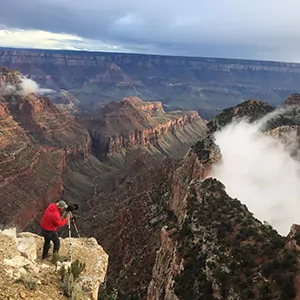 The Grand Canyon is a large park and the main feature, the canyon, has a big impact on the weather as the rims and the floor of the canyon can have drastically different temperatures and weather patterns. While inside the canyon is a desert environment, the rims are forested, Alpine environments that can get snow and ice. The average high at the South Rim in March is 55 degrees Fahrenheit, and the average low is 22 degrees Fahrenheit (high of 13 degrees Celsius, low -6 degrees Celsius.) However, these temperatures are much warmer inside the Canyon (by 10-20 degrees, feeling even warmer in the sun.) The average number of days of rain/snow in March is 6. At Phantom Ranch at the bottom of the Canyon, the average high temperature in March is 72 degrees Fahrenheit, and the low of 47 degrees Fahrenheit (22H/8L degrees Celsius.) Visitors should keep in mind that these temperatures are only averages and the park can be much warmer– or much colder– than these temperatures. Because overnight temperatures can drop below zero, there can still be ice and snow in March, especially if it has rained and the temperature is below zero overnight. This can cause the rainwater to turn to ice making trails and roads treacherous. While ice storms and winter weather are much less common in March than earlier in the season, they can still halt activities in the canyon and on the rims if the storm is bad enough.
The Grand Canyon is a large park and the main feature, the canyon, has a big impact on the weather as the rims and the floor of the canyon can have drastically different temperatures and weather patterns. While inside the canyon is a desert environment, the rims are forested, Alpine environments that can get snow and ice. The average high at the South Rim in March is 55 degrees Fahrenheit, and the average low is 22 degrees Fahrenheit (high of 13 degrees Celsius, low -6 degrees Celsius.) However, these temperatures are much warmer inside the Canyon (by 10-20 degrees, feeling even warmer in the sun.) The average number of days of rain/snow in March is 6. At Phantom Ranch at the bottom of the Canyon, the average high temperature in March is 72 degrees Fahrenheit, and the low of 47 degrees Fahrenheit (22H/8L degrees Celsius.) Visitors should keep in mind that these temperatures are only averages and the park can be much warmer– or much colder– than these temperatures. Because overnight temperatures can drop below zero, there can still be ice and snow in March, especially if it has rained and the temperature is below zero overnight. This can cause the rainwater to turn to ice making trails and roads treacherous. While ice storms and winter weather are much less common in March than earlier in the season, they can still halt activities in the canyon and on the rims if the storm is bad enough.
The temperature typically drops sharply after sundown, so make sure your hike or any other activities are finished by the early onset of winter nights. Watch out for ice on the trails especially ice that has frozen overnight. Hypothermia is a real risk in the Grand Canyon and can occur even when the temperature is above 40°F. The best way to prevent this condition is to put on your warm layers or your rain jacket before you get chilled or wet. Make sure to hike in groups as hypothermia causes confusion and recklessness and can be difficult to recognize in yourself.
It is best to be prepared for the worst weather you might encounter, so make sure to dress in layers that you can take off/put on to regulate your temperature as the temperature around you changes. If you only bring your ski jacket, you are going to be too warm most of the time, but too cold if you take it off. Make sure you always check the forecast and current conditions before you set out and ask a ranger about the conditions of the trails if you get a chance. The weather in March is much less likely to get in your way than it is in January or February, but it is still winter in the park so make sure you take the proper precautions to make your activities safe.
Wildlife in march
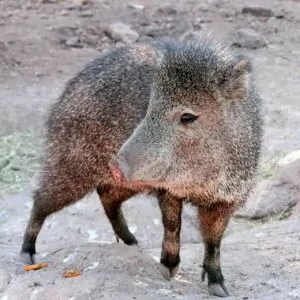 In March, the park becomes more spring-like, and much of the wildlife starts coming out of hibernation and becoming more active, depending on the weather. Many of the reptiles such as collard and greater short-horned lizards are coming out of hibernation and can be seen basking in the sun of warm rocks, especially on the Canyon floor where it is warmer than the rim. Depending on how warm it is, snakes can also come out in March, so watch your step and be careful of the rattlesnakes. Elk, mule deer, and bighorn sheep are also in the park this time of year and can be seen by visitors. These animals are more likely to be found on the rim, especially foraging among the Ponderosa Pines.
In March, the park becomes more spring-like, and much of the wildlife starts coming out of hibernation and becoming more active, depending on the weather. Many of the reptiles such as collard and greater short-horned lizards are coming out of hibernation and can be seen basking in the sun of warm rocks, especially on the Canyon floor where it is warmer than the rim. Depending on how warm it is, snakes can also come out in March, so watch your step and be careful of the rattlesnakes. Elk, mule deer, and bighorn sheep are also in the park this time of year and can be seen by visitors. These animals are more likely to be found on the rim, especially foraging among the Ponderosa Pines.
Many of the park’s rodents that have been in hibernation like Albert squirrels are coming out in March as well and can be seen scurrying about. Lucky visitors might catch a glimpse of an eagle or Perigen falcon in the sky, searching for one of these rodents to hunt. The Grand Canyon’s most famous and rare bird, the California condor, is on many wildlife viewers’ bucket lists. Brought back from the brink of extinction through captive breeding programs, the California condor has had an epic recovery story through conservation and efforts to restore its habitat. The largest bird native to the Americas with a wing span that can reach up to 9.5 feet, these birds are truly a sight to behold. Often confused with turkey vultures while in flight, condors are larger and have a much smoother flight pattern than turkey vultures that often appear “wobbly” when they fly. Mostly scavengers and the land equivalent of the sea-born albatross, condors rarely roost in the same place more than one night unless they have a nest and can travel many miles in a single day.
Another of the park’s distinct animal residents is the pig-like Javelina (see left). Also known as the collared peccary, these creatures are known for their tough diet which sometimes includes cactus. Make sure to keep your distance, however, as they can be aggressive, especially for their size. Some of the Grand Canyon’s predators, such as mountain lines, bobcats, and gray foxes are really seen by visitors because of their secretive habits and camouflage against the canyon wall. Guests are more likely to see predators such as coyotes, which are less afraid of humans and are often seen in campgrounds. The park truly has an abundance of wildlife and wonderful biodiversity, so you won’t want to miss spending some time looking for wildlife.
Recommended Wildland trips in march
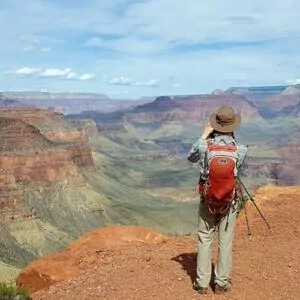 Planning a trip to the Grand Canyon in March can be overwhelming as the park is transitioning to spring and you have to keep up with weather, current conditions, and what trails are safe and available. But you can bypass all that headache by booking a trip with Wildland Trekking. Our expert guides will take care of all the details and logistics so you can sit back and enjoy your trip. We truly have something for everyone from backpacking treks to base camp tours to inn-based trips so you can pick and choose how much luxury you would like. Feel free to explore all the trips we offer in Grand Canyon, but here are a few we especially recommend for March.
Planning a trip to the Grand Canyon in March can be overwhelming as the park is transitioning to spring and you have to keep up with weather, current conditions, and what trails are safe and available. But you can bypass all that headache by booking a trip with Wildland Trekking. Our expert guides will take care of all the details and logistics so you can sit back and enjoy your trip. We truly have something for everyone from backpacking treks to base camp tours to inn-based trips so you can pick and choose how much luxury you would like. Feel free to explore all the trips we offer in Grand Canyon, but here are a few we especially recommend for March.
Horseshoe Mesa Backpacking Tour: If you want to experience the wilder side of the Grand Canyon but only have a couple of days or an extended weekend, this is the trip for you. A 3-day backpacking tour, this trip will take you along the famous Grandview Trail and onto Horseshoe Mesa, a wide tableland that extends into the canyon like the deck of a battleship. All-inclusive with your meals, lodging, local transportation, and much of your gear included, this is a great trip to get out into the backcountry for the first time or to experience a different part of the canyon than you’re used to.
Colorado River Traverse: Rated at our highest level for both solitude and difficulty, this trip is one of the most demanding– and rewarding– that we offer in the Grand Canyon. Take a trek down the Colorado River and area days of the canyon to yourself as you enjoy amazing slot canyons, remarkable views, and wonderful beach camping by the river bank. At 5 to 6 days in length and all-inclusive, you won’t want to miss this spectacular trip into the backcountry.
Best of Grand Canyon Tour: The perfect blend of rustic and luxurious, this trip is for those who want to experience the outdoor options of the park while having the comfort of hotels to stay in. Enjoy 3 distinct day hikes from the South Rim, have dinner at the famous El Tovar, and visit some of the area’s best museums and visitor centers on this 3-day, all-inclusive Wildland adventure.
Join a Guided Hiking Adventure
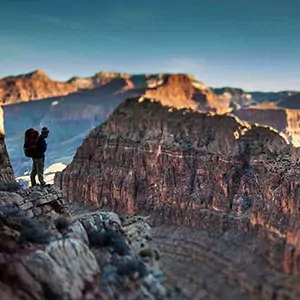 Grand Canyon National Park is home to some of the most unique and spectacular hiking vacations in the world. Wildland Trekking offers trips with stunning views, geologic history, and incredible hiking and backpacking for visitors who want to have an active, adventurous experience.
Grand Canyon National Park is home to some of the most unique and spectacular hiking vacations in the world. Wildland Trekking offers trips with stunning views, geologic history, and incredible hiking and backpacking for visitors who want to have an active, adventurous experience.
Guided Grand Canyon treks include permits, local transportation (excluded on certain tours), meals, gear, risk management systems, and professional guides, allowing guests to make the most of their visit to the Canyon, focus 100% on enjoying their experience, and do it all with an increased level of safety and comfort.
GRAND CANYON ADVENTURE TOURS
- GUIDED BACKPACKING ADVENTURES: these are for people interested in an authentic adventure deep in the Canyon’s wilderness.
- HORSE-ASSISTED TRIP: on this trip to the bottom of the Canyon, guests hike with light day packs and camp near the Colorado River.
- PHANTOM RANCH TOURS: this tour (limited dates) goes to the bottom of the Canyon where we sleep 1 or 2 nights in the Phantom Ranch Lodge 5 minutes from the Colorado River. Showers, A/C, heat…etc.
- ALL-INCLUSIVE HIKING PACKAGES: inn-based and camping-based hiking packages provide all-around hiking experiences of the Grand Canyon.
- DAY HIKE TOURS: maximize your day at Grand Canyon on a fully guided, award-winning hiking tour on one of the Park’s best trails.






